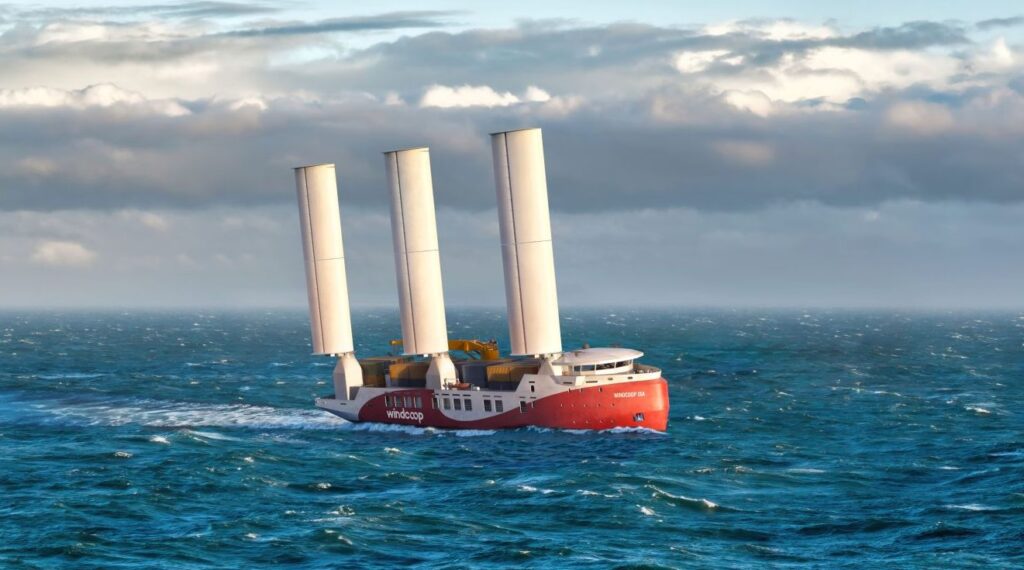Windcoop orders cooperative sailing container ship
The French are leading the way again. The Windcoop cooperative ordered a sailing container ship from the yard that also built the Neoliner. A new model for socially oriented shipping on the France-Madagascar route.
Windcoop functions as a kind of joint-stock-partnership, much the same way Dutch Jorne Langelaan wanted to finance his Ecoclipper project. Interested parties can buy shares for 100 euros each. The shares give the right to vote and to be represented on the board of directors by an elected member.
By involving all partners in the management of the cooperative, Windcoop aims to create a truly collaborative model. Different membership categories are planned: contributors (individual investors, end users, government bodies), committed dispatchers (Arcadie, Ethicable, Valrhona, Prova), institutional, financial and strategic partners, and, of course, employees and founders.
 The ordered vessel is not big, compared to the container giants that dominate shipping, but it is, compared to most other sailing cargo initiatives. It measures over 91 metres, can carry 210 TEU (twenty-foot equivalent unit, the standard container size) and a crane, and has three CWS wings with a total area of 1,050 m².
The ordered vessel is not big, compared to the container giants that dominate shipping, but it is, compared to most other sailing cargo initiatives. It measures over 91 metres, can carry 210 TEU (twenty-foot equivalent unit, the standard container size) and a crane, and has three CWS wings with a total area of 1,050 m².
Opaque
Nils Joyeux, director of the new structure, says: “The origin of this adventure was a meeting with Julien Noé, who is an advocate of the cooperative model and, in particular, the founding chairman of Enercoop. He did not know the shipping world very well, but he had questions about the social conditions of seafarers, about the financing methods, which seemed a bit opaque to him, and about the overall plan. And he wondered if there was no way to create something.”
Activist goal
Between Julien and the team at Zéphyr et Borée, where Nils Joyeux comes from, the idea of developing a shipping company with a political and activist purpose germinated. And one that would be owned by as many citizens as possible. A SCIC (société coopérative d’intérêt collectif) was created, “because it is the only structure that can integrate citizens, local authorities and companies.”
This included rethinking the role of business: not with profit as the sole objective, but rather a legal entity that provides a framework for people to provide services to other groups of people, at the right price.
Limited profitability
The SCIC is, by definition, of limited profitability. 57.5% of profits are reserved for reinvestment, shares may not be remunerated at more than 2%, and no capital gains may be realised on them. All these features ensure that companies organised as SCICs serve their raison d’être and the public interest. Joyeux: “The legal form of the company may be a detail for some, but for us, launching the construction of this first freighter with this structure organised as a SCIC is no less innovative and forward-looking than having rigid wings on the boat’s deck.”
Source: Windcoop and articles in Mer et Marine and Offshore-energy.biz.
Image: Windcoop.


